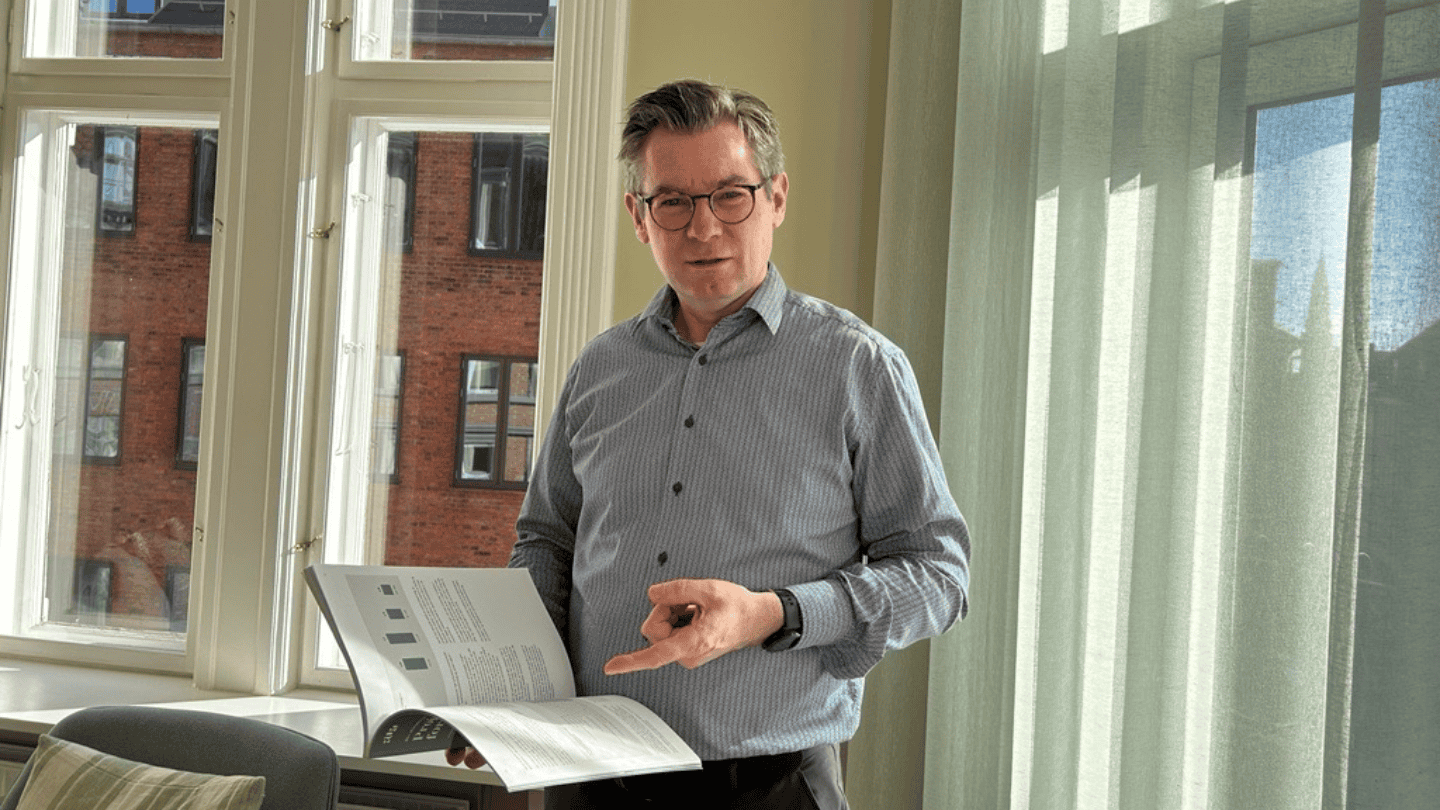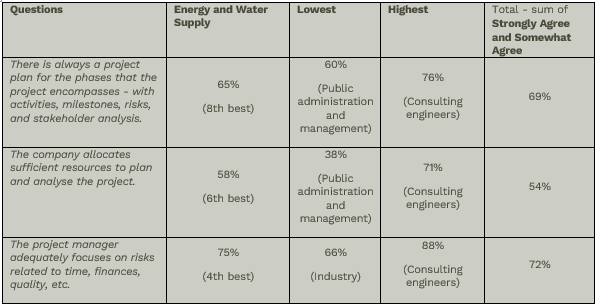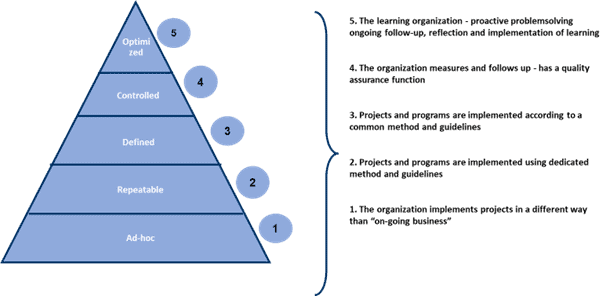
Respondents assess that the project maturity of the Energy Sector is lagging behind other industries, as concluded in the report ‘Project Management in a Changing World’ conducted in 2023 by Mannaz and RUC (led by Professor Jan Pries-Heje).
Offshore wind farms, solar energy parks, replacement of the Tyra platform in the North Sea, energy islands (in the North Sea and near Bornholm), Power to X projects, a green hydrogen connection to Germany, and projects involving CO2 storage are just some of the major projects managed by the Energy Sector. Denmark’s green transition and security of supply are directly dependent on the Energy Sector’s major projects, making it particularly problematic that the project maturity of this sector is lagging.
At the same time, the Energy Sector depends on timely approvals from authorities and other administrative processes. It is therefore problematic that both public administration and management also rank low in the table below. This certainly does not help the sector in realising its goal of creating green energy in the coming years.

The goal of raising project maturity levels requires involvement from leadership. This includes allocating necessary resources to the project (including personnel, equipment, and funds), making ongoing decisions, providing guidance to project management, and taking responsibility for the project’s life after completion – among other things.
PMI (Project Management Institute) concluded in a global survey (2017) that 77% of so-called Champion organisations reported actively engaged sponsors, compared to only 44% of Underperformer organisations.
Organisations with an appropriate level of project maturity can make balanced decisions for their projects – meaning that both operations and projects/changes can proceed concurrently without experiencing management deficits or arbitrary decisions regarding resources or budgets.
When considering respondents’ answers in the table above, the Energy and Water Supply could improve their project maturity. Higher project maturity is attractive because it can increase the proportion of successful projects – both in terms of meeting schedules and budgets and delivering the intended benefits.
*)Champions: More than 80% of their projects are completed on time, within budget, and deliver the intended benefits. Underperformers: Less than 60% of their projects are completed on time, within budget, and deliver the intended benefits.

Higher project maturity is a valuable contribution to higher project success. Delays and cost overruns with the largest projects can be significant and lead to a loss of trust from investors and other stakeholders… and in the worst case, may delay Denmark’s green transition.
It also involves managing (significant) complexity. Associate Professor Magnus Rotvig Perlt Hansen and Professor Jan Pries-Heje described in ‘Project Management in a Changing World’ several approaches that can be used. A higher level of project maturity brings management’s attention to employing these complex approaches.
At Mannaz, we work according to a 5-step model (see illustration) to increase project maturity.
If one is ‘too low’ in project maturity relative to the quantity and scope of the organisation’s projects, you may experience:

Analysing the stage of the organisation’s project maturity from the perspectives of leadership, project managers, and project participants (also from the board’s perspective) can provide a valuable and neutral picture of the current situation.
Then one can initiate one or more efforts to increase project maturity:
The most important advice for strengthening project maturity is that leadership must lead the way and not expect the problem to be solved with a quick fix. It takes a lot of practice and perseverance to succeed with large and complex projects. In the end, it is worth the effort, if Denmark is to succeed in the green transition.

You are always welcome to contact me for advice on which course or programme will suit your needs the best.
Do you want us to contact you?
Visit Contact us for more options.